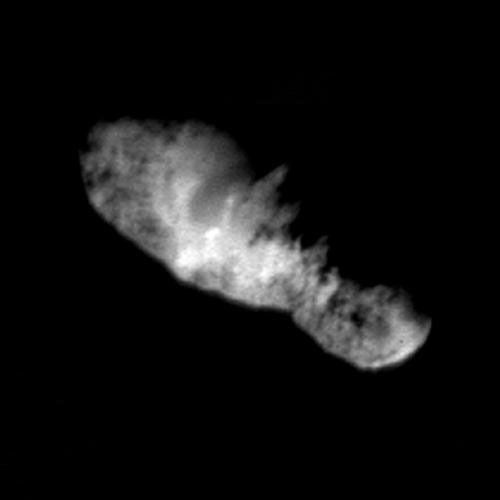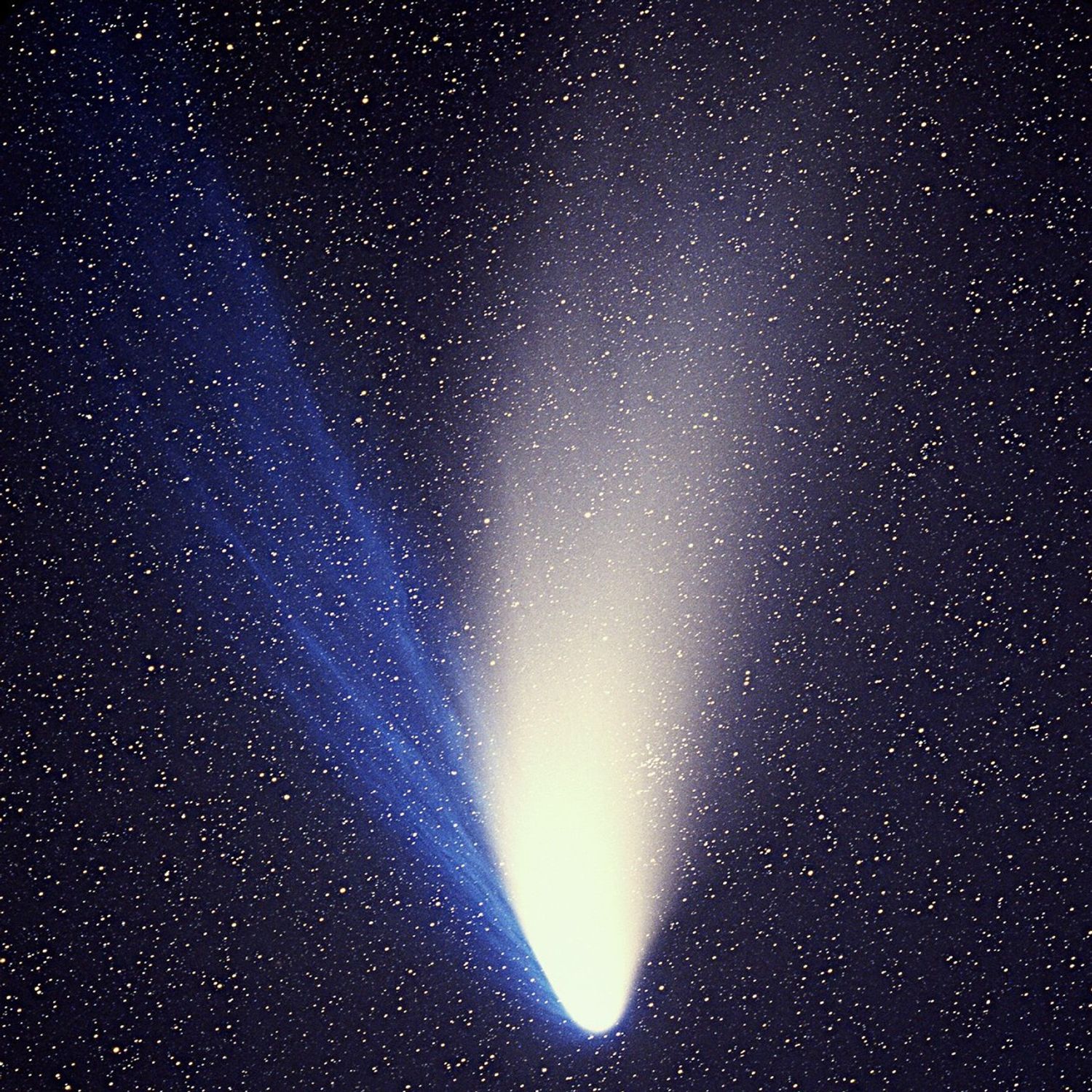1 min read
Nucleus of Comet 19P/Borrelly (Deep Space 1)

One of the comets the Webb team will study following its 2021 launch is Borrelly, a Jupiter-family comet. NASA's Deep Space 1 spacecraft snapped this image of Borrelly’s icy, rocky nucleus in September 2001. The irregularly shaped nucleus is 8 kilometers, or 5 miles, long. While Webb will not see this level of detail, it will be able to measure molecular composition on the surface and sense variations as the object rotates.
About the Data
- Data DescriptionData DescriptionProposal: A description of the observations, their scientific justification, and the links to the data available in the science archive.
Science Team: The astronomers who planned the observations and analyzed the data. "PI" refers to the Principal Investigator.Taken by Deep Space 1 spacecraft on Nov. 4, 2001, 160 seconds before the spacecraft's closest approach to the comet. This image shows the 8-km (5-mile) long nucleus about 3417 kilometers (over 2,000 miles) away.
- Object NameObject NameA name or catalog number that astronomers use to identify an astronomical object.19P/Borrelly
- Object DescriptionObject DescriptionThe type of astronomical object.Periodic comet
- Release DateSeptember 25, 2019
- Science ReleaseNASA’s Webb to Unlock the Mysteries of Comets and the Early Solar System
- CreditImage: NASA-JPL
Related Images & Videos

Comet Hale-Bopp (Johannes-Kepler Observatory)
Scientists using Webb plan to observe a “target-of-opportunity” comet, one that is not yet known but is expected to be discovered in the first year of the telescope’s mission. If they are lucky, perhaps they might capture an interstellar comet, or perhaps they will train Webb on...
Share
Details
Laura Betz
NASA’s Goddard Space Flight Center
Greenbelt, Maryland
laura.e.betz@nasa.gov
NASA-JPL






























